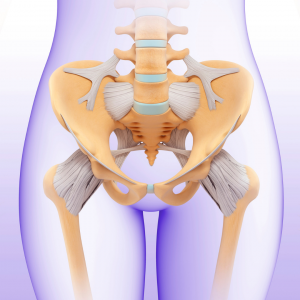
Ah pelvic floor muscles... I wish I'd known more...
Here is the thing about having kids, so often it's only in hindsight that I realise I didn't know, what I didn't know. And in this case what I really didn't understand well was what pelvic floor muscles were and why it is so important to protect them. As someone who studied Anatomy you would think I had a little more insight but back then when everything was working so well I didn't grasp the importance. However, after a traumatic forceps delivery, followed by two c-section births I am all about shouting out information on these under discussed muscles. For the past five years I have seen an incredibly thoughtful and knowledgeable physio from Pelviology in Brisbane. Recently as we said our goodbyes I asked if I could share a little of their knowledge with you. Here are my questions answered. And yes, there is no topic too taboo for us...
What is my pelvic floor?
The pelvic floor muscles are a group of muscles at the base of the pelvis. The pelvis is made up of two pelvic bones that are joined at the front by the pubic symphysis joint and at the back by the sacroiliac joint (SIJ).
Both men and women have pelvic floor muscles.
These muscles provide support to the pelvic joints and pelvic organs (bladder, uterus and bowel), help control your bladder and bowel function and are important for sexual function.

What are the biggest problems affecting the pelvic floor? (Symptoms something is wrong)
Problems can occur in both women and men. Symptoms may include:
- Bladder: leaking urine, rushing to the toilet, feeling like you cannot empty your bladder completely, feeling like you can’t start the flow of urine easily
- Bowel: constipation, straining to pass a bowel motion, pain when passing a bowel motion, soiling, unable to control wind, using your hand to help push a bowel motion out
- A feeling of heaviness, pressure, dragging or a bulge at the vagina
- Weak muscles which can occur following pregnancy, childbirth, or menopause
- While tight and overactive muscles may lead to urinary leaking, pain with sex, pain with bowel or bladder motions, pelvic pain

What are risk factors for problems? (Pregnancy, birth anything else...)
Some of the risk factors include:
- Pregnancy and childbirth, for both vaginal and caesarean delivery
- Endometriosis, adenomyosis
- History of physical or sexual trauma
- Constipation, diarrhoea, IBS
- Gynaecological surgery including hysterectomy, laparoscopy, prolapse surgery
- Elite sports training: athletics, gymnastic, dancing
Do pelvic floor exercises really work?
- Pelvic floor exercises can help strengthen a weak pelvic floor
- These exercises during pregnancy can reduce the risk of problems including urinary incontinence
- Pelvic floor exercises can help reduce urinary leaking that occurs with coughing, sneezing, laughing or during exercise
- Finally, not everyone will benefit from strengthening their pelvic floor. People who have an overactive or tight muscles may benefit from down-training or relaxation strategies.
How can a pelvic health physiotherapist help?
Your symptoms and body are unique to you. It is important to have your own assessment by a pelvic health physiotherapist to create an individualised management plan to help. Furthermore, strategies that work for a friend or family member may not be the best option for you so it's important to get yourself assessed.
At your appointment, your physiotherapist may ask questions about:
- Bladder and bowel function
- Pregnancy or childbirth history
- Pain
- Sexual function
- Menstrual history

Therefore, following an assessment, you may understand what is causing your symptoms, learn about how the bladder, bowel and pelvic floor work, learn about pain and why you may feel pain, receive exercises to help strength or control your muscles and receive exercises to help relax your muscles.
